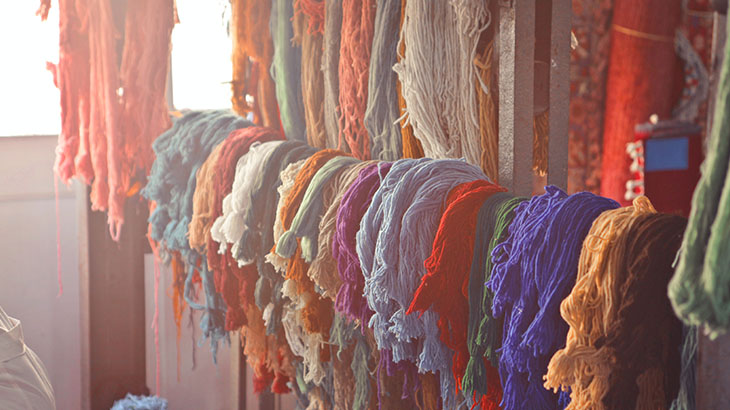Fabric designing is an integral part of the fashion industry. The whole fashion industry is dependent on the fabric and no shows can ever start without a collection of designer dresses to showcase. To beautify the fabric design, there are various methods used to create designs on the fabric. Most of them can be used at home as well. Fabric printing basically refers to creating beautiful designs, prints and patterns on a piece of fabric.
There are various methods of fabric printing and each one of them gives different results. Most of the time, the method of printing to be used for fabric designing depends on the cost and the durability. The beautiful checkered dress that you bought just from the store may look pretty and chic and the design looks effortless and clean but to achieve that level of perfection different techniques of printing are used.
In the modern days, you can see the craze for printed t-shirts. There are different methods used to create those prints on the t-shirts. Some of these methods are durable and long-lasting while some of them are temporary.
In the process of textile production, fabric printing is the last stage. When you read about the different methods of printing, it may seem easy and effortless, but ensuring that the dye remains intact with the fabric and the perfect design and print is created, takes a long time and must be done with concentration.
Broadly, there are three methods of fabric designing and printing. Namely, direct printing, discharge printing and resist printing. Let’s have a look at them one by one:
1.Direct Printing
As the name suggests, in the method of direct printing, the pattern or design is directly printed on the surface of the fabric with the help of dyes or pigments. This method of direct printing is the result of the latest technological advancements and is considered a boon because it can easily replicate the intricate and tough patterns on the fabric.
2.Discharge Printing
Discharge printing is also known as ‘Extract Printing’. In this method of fabric printing, the colours from specific areas are removed with the help of some chemicals to create a pattern or design. It is preferred mostly because it is an inexpensive way to create designs on the fabric.
3.Resist Painting
In resist printing, a base coat is applied to the fabric that resists the dye to spread over those areas and create a print or design on the fabric. Batik and tie and dye techniques use this method of fabric printing.
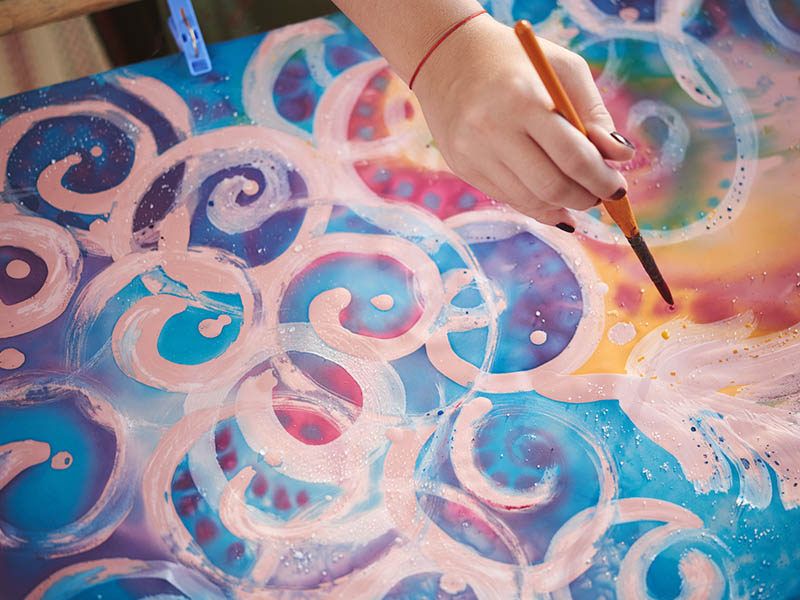
Image Source- Fashion History- LoveToKnow
These are the broad categories of fabric printing. There are several other processes of printing that are used for different occasions. The major factor of fabric printing depends on understanding the type of fabric and choosing the right type of printing method for it. Let’s have a look at them one by one:
1.Stamp Printing
Stamp printing, also known as block printing, is one of the most commonly used printing methods. As the name suggests, a stamp is created on a wooden block with the desired design to be printed on the fabric and then that stamp is dipped in the ink and gently pressed over the fabric. Make sure you apply even pressure to ensure that the ink has been clearly transferred on the fabric and the design is perfect. The process of making designs on the stamp is similar to the designs that we used to make on potatoes during our childhood. There are several pros and cons of stamp printing.
Firstly, let’s look at all the pros of stamp printing. Big machinery is not required to create designs on the fabric. You can get the exact design you have carved on the stamp and it is a great option for people running their small businesses because it is comparatively inexpensive. Stamp printing has several benefits, but it also has some cons as well. You don’t get many design options if you are using this method of fabric printing. You get only one design per stamp and cannot create orders for large quantities. The quality of the design can vary with time as the stamp gets older. You must keep several things in mind before you start with fabric printing. Make sure you clean the stamp before you dip it in the ink.
The cloth on which you are going to create designs should be washed and ironed properly so that no crease is left on the fabric. When you keep the stamp on the fabric to imprint the design, leave the stamp on the fabric for 2-3 seconds.
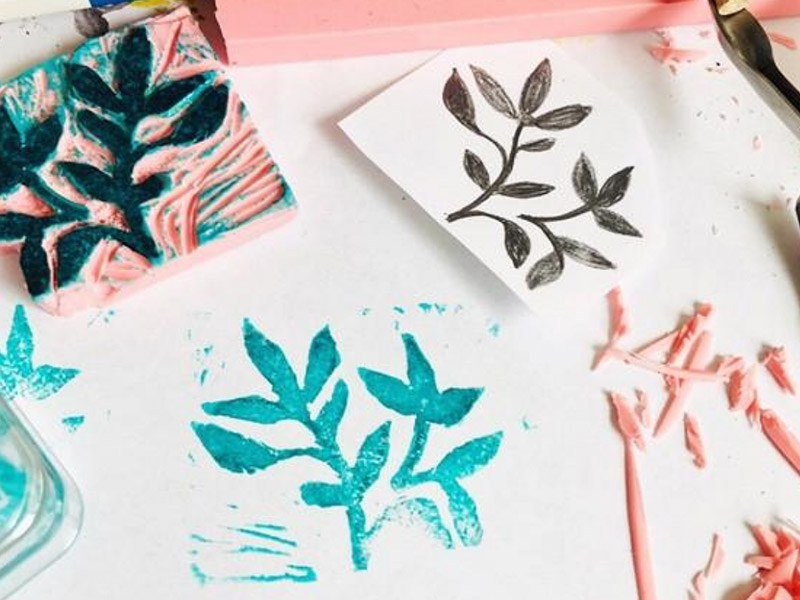
Image Source- Skillshare
2.Transfer Printing
Another method of fabric printing is transfer printing. This is done through the use of transfer paper. This is a specialist paper that is used for transfer printing and can be found easily in stationery shops and supermarkets. You can use the normal standard printers of your home to create designs on the fabric using this method. Print the desired design that you want to print on the fabric on the transfer paper using your home printer. Then you can transfer the design on the fabric by placing the design on the fabric and ironing it with a regular household steam iron. The method of transfer printing is not permanent and the paint starts to come out after washing the fabric multiple times and fades out as well. So, there are several pros and cons of transfer printing as well.
Firstly, let’s have a look at the pros that are offered by this printing method. You can easily create a design on the fabric using your standard home printer and it doesn’t require any special types of equipment. Next, it is a great option for small businesses and you can literally print any design on the fabric. However, there are some cons to transfer printing. This method is generally preferred for a short-term and temporary purpose. Transfer printing leaves a surface texture or film that doesn’t look so good. With time and after several washes the paint starts coming out and fades and cracks.
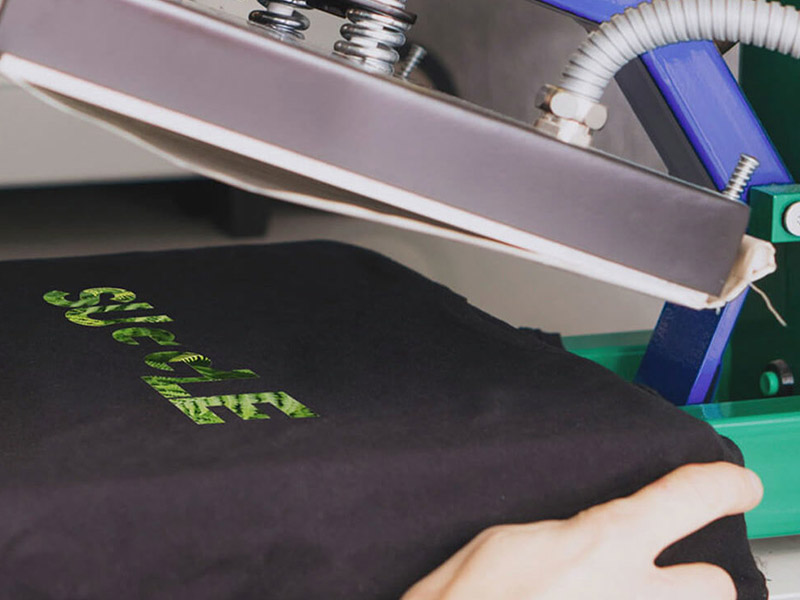
Image Source- SNUGGLE
3.Batik Fabric Painting Technique
Batik painting is very common in India and this technique requires a lot of supervision and the preparation for it must be done beforehand. The main elements required for batik fabric painting are wax and paints. These are the following steps required to create batik painting on fabric:
a. Firstly, collect all the materials required like pencil, muslin cloths, scissors, iron, plastic sheets, fabric dyes, water, melted beeswax for batik wax and other things.
b. Second, create a layout of the design that you want.
c. Next, apply the first layer of wax on the fabric for the areas that you want white after the final process.
d. Apply the second layer of wax after the first layer has dried nicely.
e. If you want to create a crackle effect then crack the wax in some areas.
f. Now apply the fabric dye of your favourite colour and let it dry.
g. After the dye is dry, put a newspaper over it and iron it to remove the wax.
h. Lastly, enjoy the final product, once the wax is removed from the fabric.
4.Dot Painting Technique
This painting technique is ideal for beginners because it is one of the easiest techniques. It is a simple technique as it requires very few tools and the outcome is very vibrant and beautiful. Following are the steps that are done for dot painting:
a. Firstly, keep the materials ready. The materials required are paint, earbuds, a pencil and a thin stick.
b. Then wash and iron your fabric to prepare it for the painting.
c. Outline the desired pattern with a pencil on the fabric.
d. Next, dip the earbud in the paint and press it on the patterns that you made with the pencil.
e. Leave it to dry for some time and then it’s done.
5.Screen Printing
Screen printing is one of the most commonly used fabric printing methods in India. It is professional and gives the best results. In this method, a stencil and nylon mesh is used to create designs and patterns on fabric. Hence, this method is used for large scale productions and is long-lasting as well. The waterproof material is used to block the spaces so that the design can easily be imprinted upon the fabric. As the screen printing method is labour intensive it is not suitable for small-scale businesses. Only one colour can be used per screen and it creates a lot of waste.
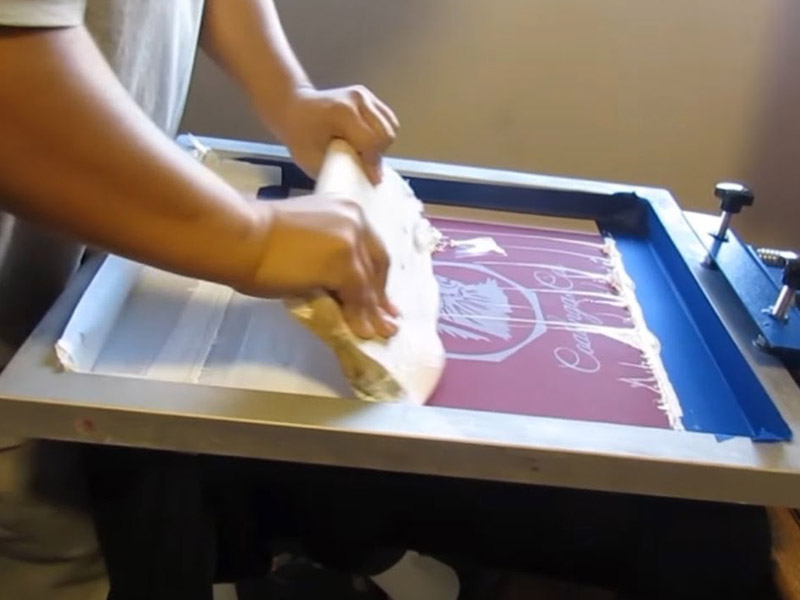
Image Source- YouTube
6.Finger Painting Technique
The finger fabric painting is a simple hand painting technique and you can draw any pattern you want using your fingers. It is a very simple method and requires fewer tools. Following steps are followed for finger painting:
a. Firstly, draw a simple design on the fabric using a pencil, of your choice.
b. Dip your fingers in the paint and start painting on the design that you made with the pencil.
c. Now, let the paint dry and your final product is ready.
7.Freehand Fabric Painting Technique
This painting technique is best for experienced people who are confident with their painting and at the same time want to experiment with something new. Freehand fabric painting can be done on any type of fabric like denim, cotton, silk, linen, etc. The steps involved in this technique are as follows:
a. Firstly, choose the right tools.
b. Prepare your fabric first by washing and ironing it.
c. Be confident about the design that you are going to make and start painting with a steady hand.
d. After you are done painting, let it dry and then flaunt your art.
8.Spray Fabric Painting Technique
It is easily understood by the name of what spray fabric painting is. This technique is very similar to that of spray paint on paper. You can paint almost any type of fabric using this technique. The steps involved in the spray fabric painting technique are as follows:
a. Firstly, take a sprayer bottle and fill it with the colour of your choice.
b. Cut out a random stencil of the desired pattern that you want to achieve.
c. Spray the paint on the fabric and leave it to dry.
d. Remove the stencil and your design is ready.
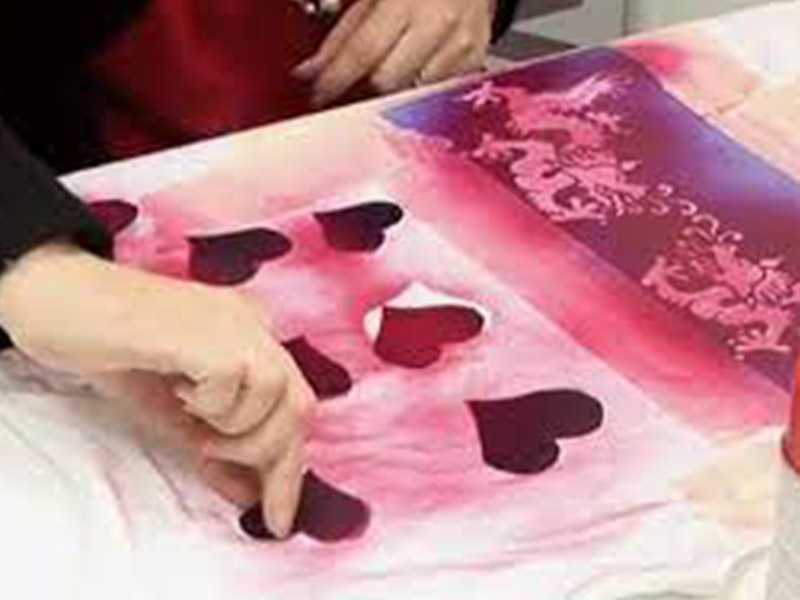
Image Source- Dailymotion
Also Read : Different Printing Methods for Textile Designing
Many institutes are teaching a Fabric Designing Course as it is gaining immense popularity lately. Many people assume that it is tough and creating designs using this craft is very complex, but this is not the case in reality. You just need to spend some time learning fabric designing regularly and before you realise it, you’ll be the master of it. Hunar Online Courses offers a Fabric Designing Course where you can use your creative skills and create different types of designs. You can make use of your creativity and get a perfect design according to your needs. You can enrol in our Online Fabric Designing Course. It has easy video classes which are accessible every time and you can learn from anywhere. You also get 24/7 faculty support which will help you clear your doubts.
So, what are you waiting for? Join Hunar Online Courses and start paving a new path to your career.

